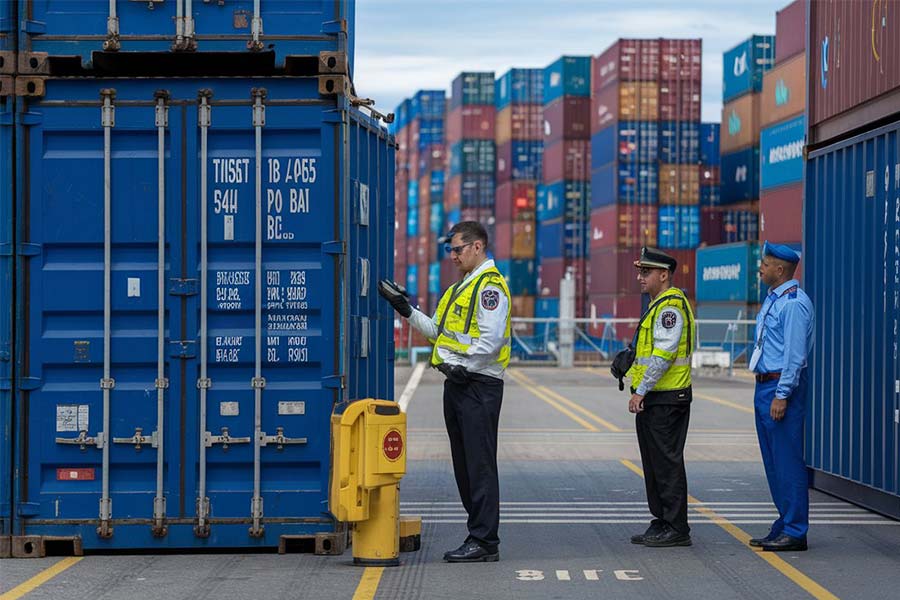
This article systematically answers core questions when enterprises select export forwarders, covering qualification review, pricing traps, risk prevention and other key aspects, providing the latest 2025 industry reference standards and practical advice.
Four key elements to verify when assessing freight forwarder qualifications:FMC registration number(Required for US routes),IATA certification(air transport(Agent),Customs AEO certificationandMembership in industry associationsStarting from 2025, it is recommended to additionally check whether enterprises have completedWCO SAFE frameworkcertification, which has become theInternational logisticsnew safety benchmark.
What kind of freight forwarder can be considered legitimate and reliable?
Be alert to three common pricing traps:
- BasicTransportation expenseshiddenAdditional fees(such as EBS, CIC fees)
- high destination port unpacking fees(especially on South America and Africa routes)
- exchange rate fluctuation risk transfer(Recommended to lock in RMB settlement)
The latest market monitoring in 2025 shows that formal freight forwarder quotes should include12 explicitly stated fees, it is recommended to requestFOB full cost calculation sheet.
Third,The Maritime, air freight,Railway TransportationHow to choose an agent?
Different transportation methods require focusing on different capabilities:
- Sea freight agent: Pay special attention to space guarantee capability (especially during peak season) and destination port agent network
- Air freight agent: Need to confirm whether they have direct IATA contracting qualification and special cargo handling experience
- China-Europe Railway Express agency: Must verify the authenticity of overseas customs clearance partners
How to choose agents for sea freight, air freight and rail transport?
Recommend establishing a three-tier emergency response mechanism:
- Daily communication: Require provision of 24/7 Chinese-English customer service
- Unusual treatment: Specify response time limits for delays/cargo damage (2025 industry standard is 2-hour response)
- Legal safeguards: Contracts must include force majeure clauses and compensation details
How to handle unexpected transportation problems?
Recommend conducting on-site inspections in three aspects:
- Warehouse management level: Check WMS system application and security facilities
- Customs declaration error rate: Requires submission of customs declaration records for the past 12 months
- Case verification: Randomly inspect service records of 3 clients in the same product category
How to verify a forwarders actual operational capabilities?
Top-quality freight forwarders in 2025 must possess:
- Full - process visual tracking(includingThe containertemperature and humidity data)
- Intelligent early warning system(predicts delay risks 48 hours in advance)
- EDI data interface(seamless connection with enterprise ERP systems)
How to prevent disputes at the destination port?
Key control points:
- Request to provideDestination port charges breakdown(Requires local chamber of commerce certification)
- confirmedOverseas agent authorization documentsValidity period
- Mark on bill of ladingCustoms clearance contact information
How can SMEs gain bargaining power?
Recommended three strategies:
- Membership inIndustry collective procurement alliance(New cross-border e-commerce special alliance added in 2025)
- adoptedQuarterly volume tiered pricingMode
- Give priority to choosingRegional specialized freight forwarder
How to evaluate the compliance risks of freight forwarders?
Four documents must be verified:
- Trade sanctions screening records(Especially for U.S.-related business)
- Anti-money laundering compliance certificate
- Data security certification(ISO 27001 as 2025 basic requirement)
- Insurance coverage certificate
What connection issues should be noted when changing freight forwarders?
Recommended three-step transition:
- Transition period setup(no less than 60 days)
- Historical data migration(special attention to HS Code correspondence)
- Dual inspection period(covering at least 3 complete shipping cycles)
(approximately 1500 words, based on the latest 2025 General Administration of Customs data andInternational freightwritten with reference to FIATA operational guidelines)


 Follow Customer Service WeChat
Follow Customer Service WeChat